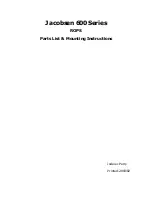
Commissioning
10
DB 112 B
Leuze electronic
Calibrating on the material to be detected
For reliable detection of double layers of the medium being processed, it is always neces-
sary to perform a calibration on a single sheet of the medium.
Calibration of the material to be detected can be performed by either pressing the
TEACH IN
button on the analysis amplifier for 0.3s to 5s or by means of a control command at the
Teach IN
input (pin 5).
Notice!
Setting the
Teach IN
input (pin 5) disables the
TEACH IN
button. As soon as a signal is ap-
plied once via the
Teach IN
input for the purpose of calibration, the
TEACH IN
button re-
mains inactive (disabled) until the next Power On.
During the calibration process, LED
illuminates yellow.
If the calibration was successful, LED
illuminates green and LED
yellow. The
single sheet
output is activated. The reference value remains stored until the next calibra-
tion process.
If the calibration process was not successful, LED
flashes red and LED
illuminates
red. The
double sheet
output is activated.
Notice!
Causes of unsuccessful calibration include e.g.:
• More than 1 sheet between the sensors.
• Unsuitable sheet material, e.g. due to lamination or coating, too thin, too thick, or air
pockets present.
• Pitch to sensors too low.
The VDB 112 B analysis amplifier can be operated in 3 different operating modes (teach
modes):
1.
Standard mode:
Teach with intelligent transmitter/receiver control for covering a wide spectrum of
materials.
2.
Automatic teach:
300ms after sheet detection by the ultrasonic sensors, teach-in occurs automatically.
In this operating mode, manual or external teaching is not necessary. A new auto-
matic teach-in is carried out if the ultrasonic path is clear for more than 2s.
3.
Fixed switching threshold:
This operating mode is recommended when the process does not permit manual or
external teaching. In this operating mode, the variety of materials to be detected is
limited.



































